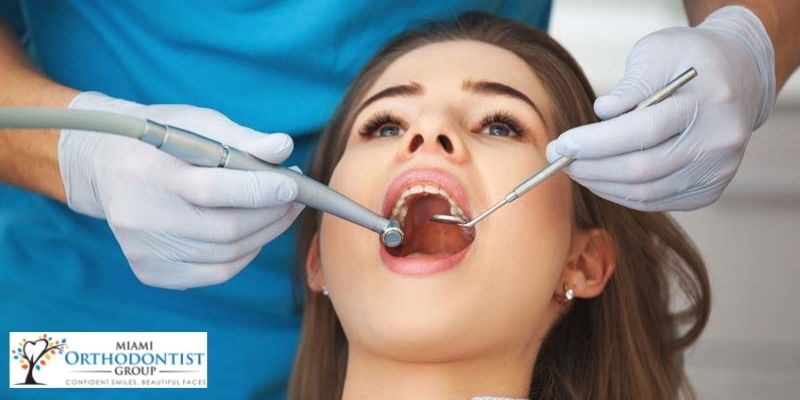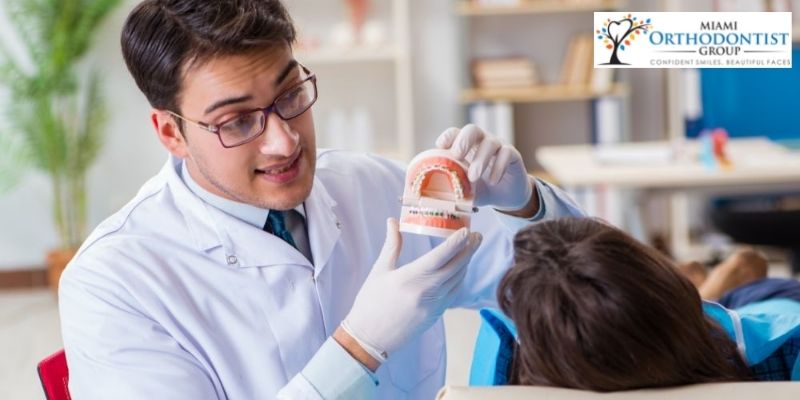Not everyone gets excited about going on an orthodontic appointment. Young children are often said to be the most anxious about sitting in front of any dental specialist but most teenagers and adults can have just about the same anxiety problems as seen in little children.
If you have smile problems, your first Orthodontic visit should be nothing to worry about since it will be a great step to take while trying to achieve a better smile. It is easier for children to snap out of their fears of visiting an orthodontist than most adults especially if they have already had an early dental consultation.
As an adult, you must be expectant even though you are not sure what the orthodontist will say on the first visit. Whether it is your smile or your child’s smile you are looking to correct, you must first carry out an orthodontic consultation before scheduling your first appointment and expect the following
Arriving at the Clinic
Be expectant of your arrival at the clinic where you will be welcomed by a team of Orthodontic experts. Some clinics provide forms to complete on arrival while others send the forms by mail.
Patients who receive the form are expected to complete the forms and bring them to the clinic. Afterward, you will be assigned to an orthodontist who will look into your problem.
The Consultation Regarding your Dental and Medical History

On meeting face to face with the specialist, he or she will pay close attention to your dental situation by asking you or your child, certain questions about any dental situation you have been challenged with. You should also allow the orthodontist to undergo a physical examination of your teeth so that it will be easy to know what to do next.
After carefully examining your teeth, some dental experts will suggest that you hold off since you or your child may not need any orthodontic treatment at the moment. Your orthodontist will know whether an orthodontic problem needs an urgent intervention or not.
Sometimes, an orthodontist can defer some treatments in adults and teenagers, due to observable signs such as trauma in the jaw, severe gum diseases, bad oral care, and other unwelcoming disorders. You will be asked to first have these problems corrected before opting for orthodontic treatment.
You must be truthful when filling out the paperwork in line with your overall health. You can analyze your dental history from your childhood to adulthood. This way, it will be easy for your orthodontist to recommend the appropriate help.
With your accurate health information, the orthodontist will look into your previous health records and know how you have been managing up to the point of your visit. Your records help in checking your last dental visit, the state of your bone through your x-ray records, and other important things to know.
Oral Examination & Imaging

This step of consultation involves imaging and examination done orally to check for any problem that you may have that has not been reflected in your medical records. Some patients may be suffering tooth decay or may have a hole in their teeth that needs urgent attention before orthodontic treatment is administered.
Examples of oral examinations that should be taken before orthodontic treatment include;
- The use of dental putty to create a matching mold to your teeth.
- The use of hand tools to examine the teeth and gums.
- Dental imaging or using X-ray to examine the structure of the teeth including the jaw and the teeth and the bones surrounding them.
The idea of consulting an orthodontist for an oral examination is as normal as having a regular dental appointment with your dentist. If you or your child are already familiar with the dental environment, then you are on your way to having a good experience with an orthodontist.
Just like you are not to be afraid of showing your teeth to the dentist for an oral examination, you should trust your orthodontist and do the same. Getting proper dental imaging and examination will ascertain any further recommendation by your orthodontist.
Your child’s teeth may look healthy even though he or she might have some underlying dental problems that must be first dealt with before the child receives orthodontic corrections. These problems can only be detected through the means of oral examinations.
Initial Treatment Plan
On completing an orthodontic examination, the orthodontic will initiate the first treatment plan if you need any, regarding your dental records. These treatments are for patients who have dental problems that must be corrected before getting orthodontic treatments. Your dentist can recommend the best treatment for your dental problem.
This treatment also involves getting the best methods. The duration of the initial treatment is also important. During an orthodontic consultation, the patient will get to find out what method of treatment will work best and he or she will be expectant of the procedure that will be used for the treatment.
Questions & Answers
You can ask any question bothering you and the orthodontist will provide you with accurate answers to them. You are also free to take as much time as you want when thinking through the questions on your mind. Your orthodontist will find you interesting if you do not hold back any contribution or questions that concern your health.
Some orthodontists provide materials to their patients, which they can read and become more knowledgeable of their debts or orthodontic challenges. It could be a small brochure with some dental information that you can take home with you for further knowledge to be gained.
Schedule Your First Appointment
This is the final thing you must do after you have completed an orthodontic consultation. If you do not have any dental problem that requires initial treatment, you can schedule your first orthodontic appointment as soon as possible.
Conclusion
Now you know there is no need to develop cold feet when an orthodontic consultation comes into play. It is normal to be anxious but acting on your anxiety can stop you from getting the smile you have always wanted.
You must not book an orthodontic appointment without first consulting the orthodontist to examine if you may need an initial treatment to correct some dental problems before opting for orthodontic treatments.


